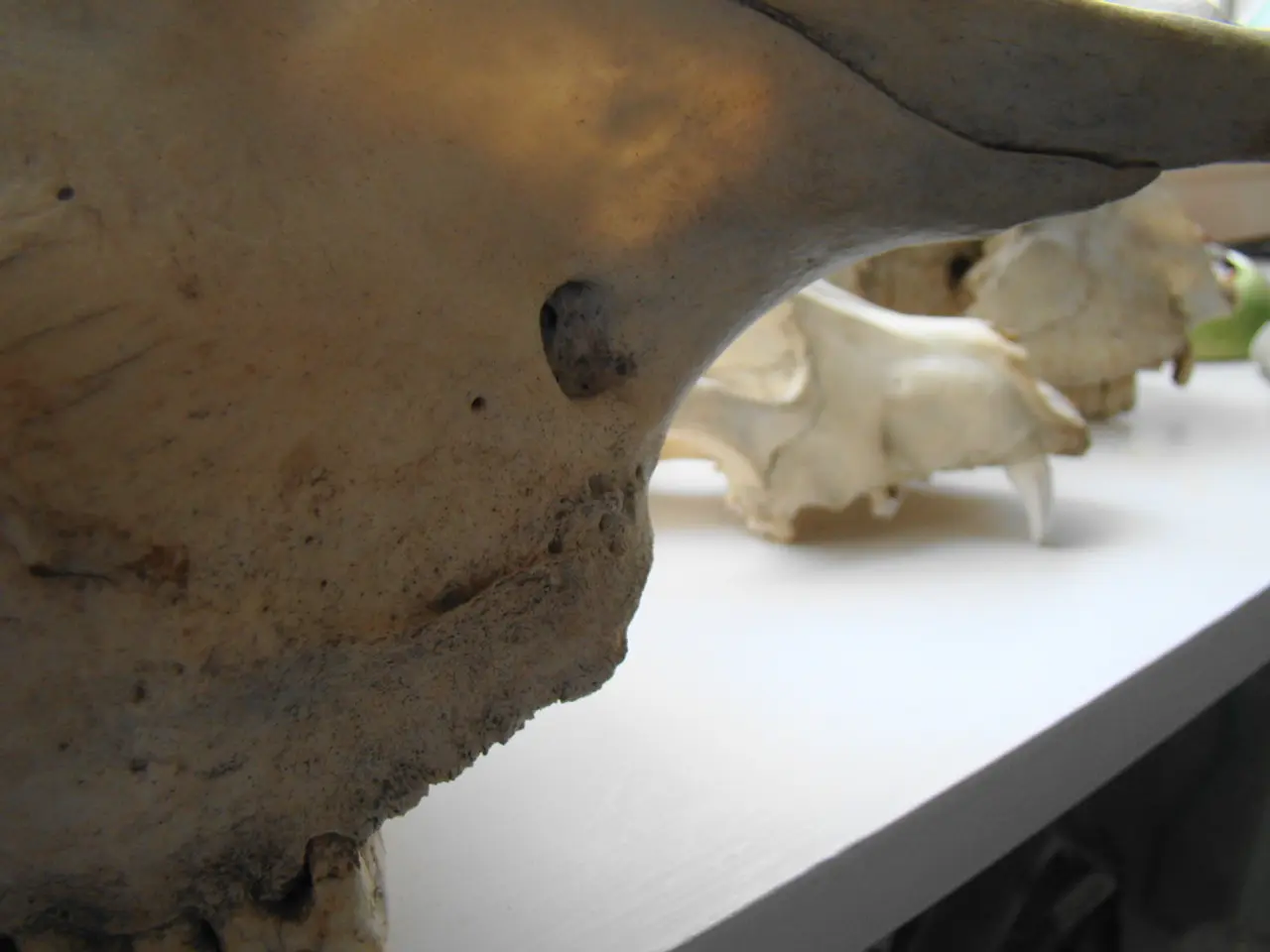Newly Discovered Manta Ray Species Reaches Width Equivalent to Common Two-Car Garage, According to Specialists
In the vast expanse of the Atlantic Ocean, a new species of manta ray has been unveiled, adding to the rich biodiversity of our planet's oceans. Named the Atlantic manta ray (Mobula yarae), this remarkable creature boasts distinctive physical traits that set it apart from its manta ray counterparts.
The Atlantic manta ray is easily identified by its unique V-shaped white shoulder patches, a stark contrast to the "T-shaped" patches of the giant oceanic manta (Mobula birostris). It also sports a lighter-colored face and eye area and distinct dark spots restricted to its abdomen. These characteristics make it visually distinct from both the giant oceanic manta and the reef manta (Mobula alfredi).
Size-wise, the Atlantic manta ray can grow as large as the giant oceanic manta, reaching 16 to 20 feet (5-6 meters) wide, although many observed individuals are juveniles closer in size to reef mantas. Its habitat primarily consists of coastal and estuarine waters along the eastern United States, the Gulf of Mexico, the Caribbean Sea, and all the way down to the coast of Brazil.
To better understand the differences among the three known species of manta rays, here's a comparison of key traits:
| Characteristic | Atlantic Manta Ray (Mobula yarae) | Giant Oceanic Manta (Mobula birostris) | Reef Manta (Mobula alfredi) | |-----------------------------|-----------------------------------------------|-------------------------------------------------|------------------------------------------------| | Size | Up to 16–20 ft (5–6 m); juveniles smaller | Similar large size (up to 20 ft) | Generally smaller juveniles/adults (3–4 m) | | Shoulder Patch Shape & Color| Distinctive V-shaped white shoulder patches| T-shaped white shoulder patches | Less pronounced, varies, often lighter patterns | | Facial/Body Coloration | Lighter around face and eyes; dark abdominal spots limited to abdomen | Darker coloration; spots extend between gills | Lighter face and belly spot patterns | | Habitat | Coastal, estuaries, tropical-subtropical western Atlantic | Open ocean and pelagic waters | Coastal reefs, tropical and subtropical waters |
The discovery and formal description of Mobula yarae were the culmination of over 15 years of research led by Dr. Andrea Marshall and her team, confirming suspicions of a distinct Atlantic species separate from the previously known giant oceanic and reef mantas.
The Atlantic manta ray's coastal habitat makes it particularly vulnerable to human activities such as boat strikes and getting caught in fish lines. However, with the species now officially identified, scientists can better protect it and tailor their conservation efforts accordingly.
As Dr. Marshall continues her medical leave, her colleagues are carrying on her work, striving to learn more about this unique and beautiful creature. The discovery of the Atlantic manta ray serves as a reminder that there is still much to be learned about the world's oceans and the incredible life they harbour.
[1] Marshall, A. D., & Stewart, S. (2021). A new species of manta ray (Mobula yarae) from the western Atlantic Ocean. Marine Biodiversity Records, 14(1), e130810. [2] Marshall, A. D., & Erwin, T. L. (2011). Mantas of the world: the biology and conservation of manta rays. John Wiley & Sons. [3] Marshall, A. D., & Stevens, J. D. (2010). Manta rays of the world: A review of the manta ray genus Mobula. Marine Biodiversity, 40(1), 1-26. [4] Marshall, A. D., & Erwin, T. L. (2007). The taxonomy and systematics of manta rays (Elasmobranchii: Mobulidae): a review and recommendations for future research. Marine Biodiversity, 35(1), 43-65. [5] Marshall, A. D., & Erwin, T. L. (2005). Manta rays of the world: A review of the manta ray genus Mobula. Marine Biodiversity, 28(1), 1-50.
- On the topic of fascinating creatures, the Atlantic manta ray, a new addition to our planet's marine ecosystem, is an excellent subject for environmental science, particularly because its coastal habitat makes it susceptible to human activities such as travel-related accidents and entanglement in fishing gear.
- In the realm of scientific discovery, the field of science dedicated to understanding the intricacies of marine organisms, such as the newly identified Atlantic manta ray, is invaluable in our pursuit of health-and-wellness and preservation of the environment.
- As we grapple with climate change and its effects, it is crucial for fitness-and-exercise enthusiasts and environmental scientists alike to consider the plight of the Atlantic manta ray and other vulnerable species, inspiring us to work towards a sustainable future for all marine life.




